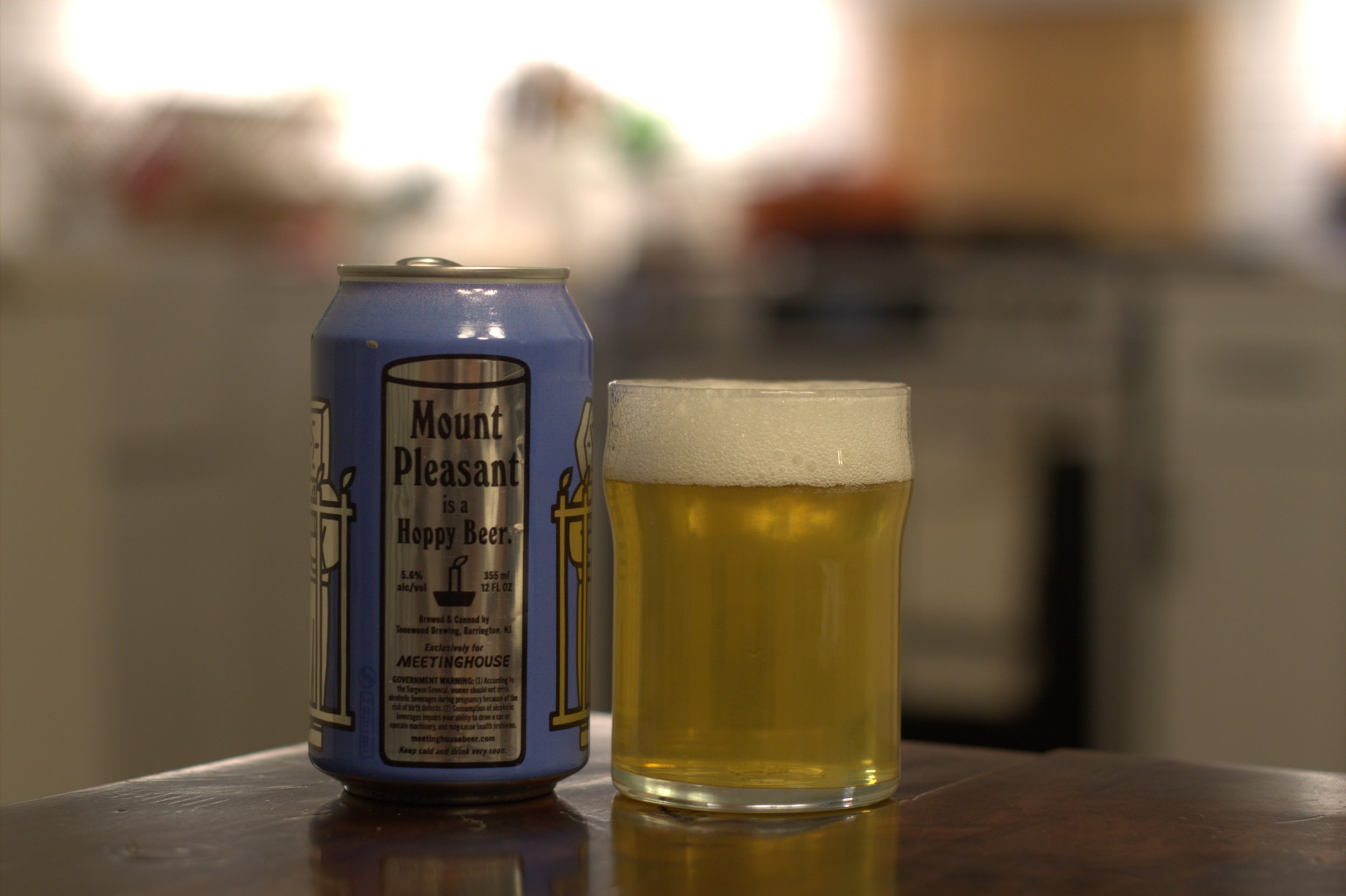Bonn Place Brewing owner Sam Masotto decked out as Krampus and overlooking Bethlehem, Pennsylvania, ready to visit misbehaving patrons at his brewery. Source: Bonn Place Brewing.
If you’ve ever been to a brewery taproom and stolen glassware, left your obnoxious kids unattended, or asked for countless samples before buying a beer, your day of reckoning may be here. It’s Krampus season, and Krampus is popping up at more and more breweries around the US, ready to unleash ruthless punishment for all naughty patrons.
The Krampus tradition comes from European communities centered around the Alps (notably in Austria) and features a frightening mythical figure that is a counterpart to St. Nicholas. While St. Nicholas gives treats to children, Krampus punishes them for bad behavior. One form of punishment is a brutal beating with a bundle of birch sticks known as Ruten. Worse than that, one might be thrown in a sack and taken away forever. I’m not sure exactly where you will be taken. Probably Hell. Who knows? Maybe Mar-a-Lago.
Krampus’ appearance is characterized by goat-like horns, a long tongue, furry body, and hooves. The creature may also wear chains and bells. It’s not terribly unlike me in my late teens. I bet Krampus smells better though.
During the holiday season, Krampus begins to appear in Europe around December 5th, which is the eve of St. Nicholas' Day. This is the official Krampusnacht, or Krampus Night. Each year around this time, there are parades called Krampuslauf, or Krampus run, where people dress up like Krampus, some wearing ornately carved wooden masks, and they march through town beating drums. As it should be, the spectacle is entertaining for some and frightening for others.
Closer to home, more and more breweries are holding their own Krampus events in December. In a shock to no one who knows him, Bonn Place Brewing owner Sam Masotto has donned his very own Krampus costume for the event, which they have been celebrating since 2016.
Bonn will be celebrating this year on December 5th and 6th with food, music, and beer, of course. And though Sam may dress like Krampus, he’s actually more like St. Nicholas. He uses the event to think of others and includes a clothing and coat drive.
Notch Brewing will be in the charitable spirit as well this year for a Krampus event at their Brighton location on December 14th. In addition to several other forms of revelry, they will be collecting toys and gifts for donation. The festivities will also include a Krampuslauf, a Krampus costume competition, and Krampus-themed holiday card making (Krampuskarten.)
In addition to Bonn and Notch, many other American breweries are making Krampus part of their regular holiday festivities. Sacred Profane in Biddeford, Maine, Live Oak Brewing in Austin, Texas, and Wild East Brewing in Brooklyn, New York, just to name a few.
These celebrations are a relatively recent tradition in the US, and it’s one that presents lots of opportunity. I have some thoughts.
I firmly believe Krampusnacht could be the kickoff to an extended Starkbierzeit. Starkbierzeit is the strong beer season celebrated in Munich during Lent. To me, the perfect beverage for Krampus festivities is a strong and dark lager like Doppelbock. The strength and flavor are perfect for a cold December night. The fact that there’s goat imagery related to Bock beer and Krampus helps solidify this pairing.
A strong beer getting a hot poke in a stein from a bierstacheln at a Notch Brewing Starkbierzeit (strong beer season festival). Source: Notch Brewing.
Celebrations should include fires not only for ambiance, but also to heat metal rods in the bierstacheln tradition, where they’re used to warm a cold beer and nicely caramelize some residual sugars in the malty brews. And forget birch sticks for punishment. The scalding rods can also be used by Krampus to brand some jerk that uses British-style dimple mugs for lager.
As is the case for Starkbierzeit, a proper stein should be used. And not just for drinking. Pound the beer and smash that thing over the head of someone who calls a glass mug a stein.
Let the punishment begin!!!





























